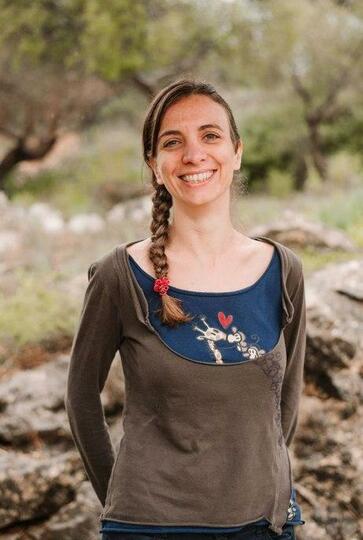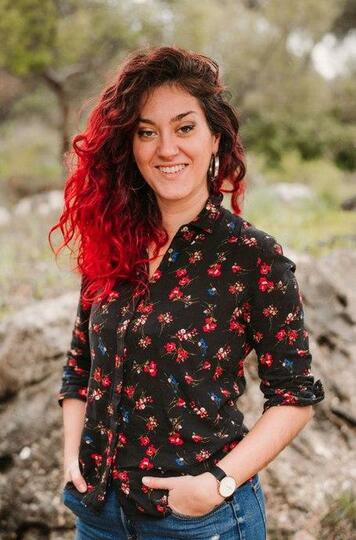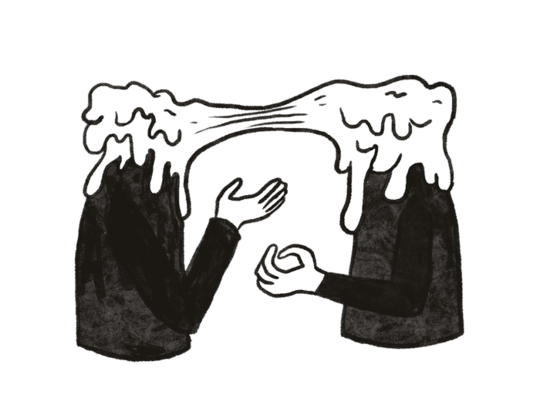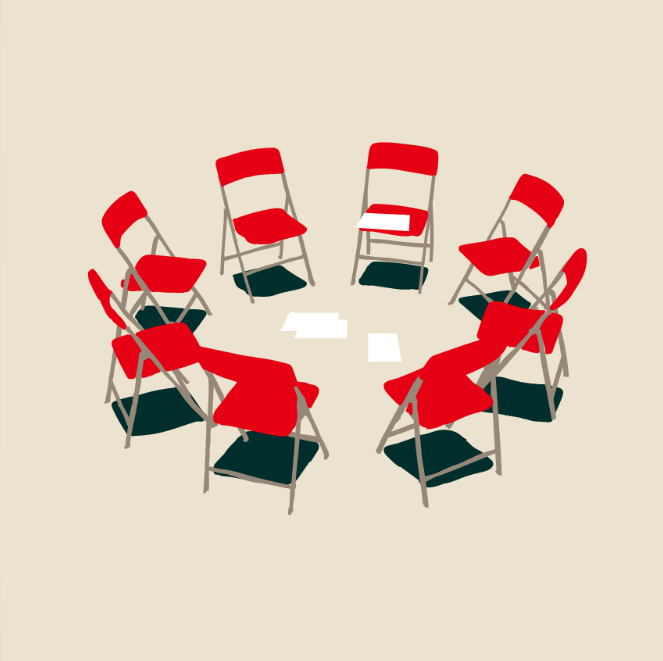
"It is worth repeating here an affirmation still rejected by many people despite its obviousness: education is a political act."
Learners of Freire’s wisdom and aware that participation is learned by participating, from Platoniq we have embarked on BePart, a European project that promotes processes of participation, empowerment and youth leadership in schools.
A few months ago, in this article we shared the first drafts of the project and some of the questions that arose. During this time, we talked to high school teachers in Barcelona, Madrid and the surrounding area. Through their eyes, we have landed in a somewhat arid reality for real student participation but with great potential: that of young people, high school students, the protagonists of BePart.
Young people have a great spirit of participation and a desire to be useful, so we want to provide you with more ways to get involved.
Below are some of the contributions made by teachers where they indirectly reflect on the questions we asked. We greatly appreciate their time and availability.
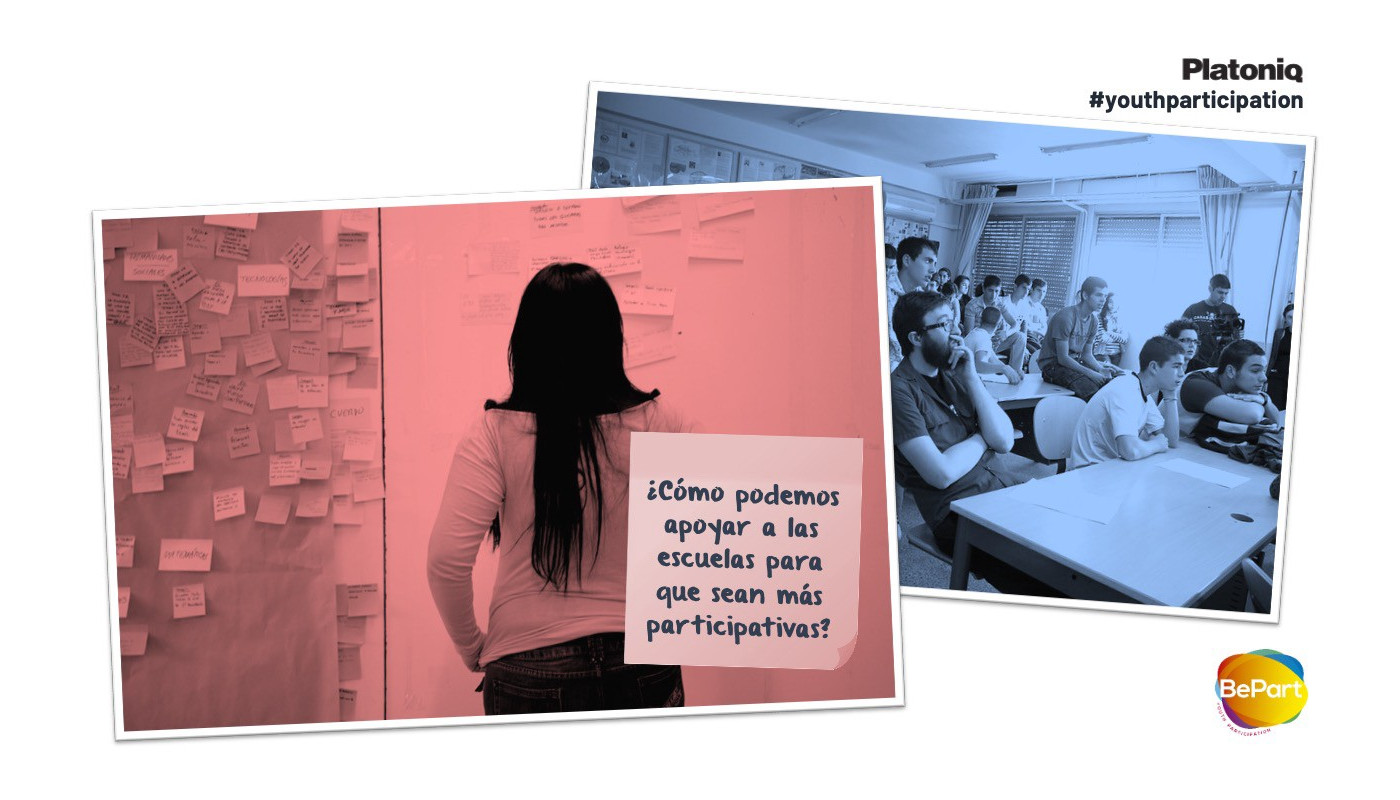
How can we support schools to be more participatory?
cc-by-sa Platoniq
How can we support schools to be more participatory?
About students
“The most participatory students come from families with an interest in participating and contributing to the community. That’s why I think so few young people are participating, because there is a lack of a global culture of participation for families and adults.”
Young people are the future, but they rely on the past, the environment and the conditions in which they grew up. The context in which we grow up often determines our predisposition to participate. However, we must remember and keep in mind that before we can and want to participate, our basic needs must be covered, both materially and psychologically.
“Most students in this school come from families with low income levels. They are grateful young people but very demotivated because they are convinced that they are useless. The hardest part about getting into these classrooms is giving them value and getting them to have a little more self-esteem.”
That's why I think so few young people are participating, because there is a lack of a global culture of participation for families and adults.
We said before that young people are the future… Did it make you cringe when you read it? We are so used to phrases like this that we forget to point out that young people are also the present. It may be trivial, but in our opinion, it reveals the tip of an iceberg of considerable size, a problem that also worries teachers:
“One issue that worries me a lot as a youth educator is that, as a general rule, there is a sense of exclusion in social decisions that causes [young people] not to feel empowered in many ways, including that of the school. (…) I think this is the main barrier. They really feel, and this is how we have made them understand, not us [teachers] but society, that they are passive subjects of their life. I think this is the biggest issue not only at the educational level, but also at the societal level.” (1/2)
About the school system
Many schools are not prepared to accommodate real student participation as there is a very structured operation, with very defined rules and hierarchy.
Although the school system seems a bit rigid and immovable, there are specific projects that, featuring student participation, have managed to complement the established structures and rules of what-to-do-when. The same teacher continues to tell us:
“In many schools, the peer mediation commission works to resolve conflicts. This is a good example of how a participatory project complements a previous structure that says what to do when there is a conflict.”
On the other hand, it is important to note that to build a school system open to youth participation, this openness must be given from the participation and involvement of students, not only in the implementation phase of the proposals, but also in the design phase.
“If the school system is to be improved, it can only come from the participation of students, and at all levels. I think that many of the current proposals for educational innovation and transformation make no sense without the participation of students. I think many of these proposals fail because they keep focusing on educators instead of the person who’s learning. Many methodologies say they ‘focus on the students’ but everything about them is decided.”
I think that many of the current proposals for educational innovation and transformation make no sense without the participation of students
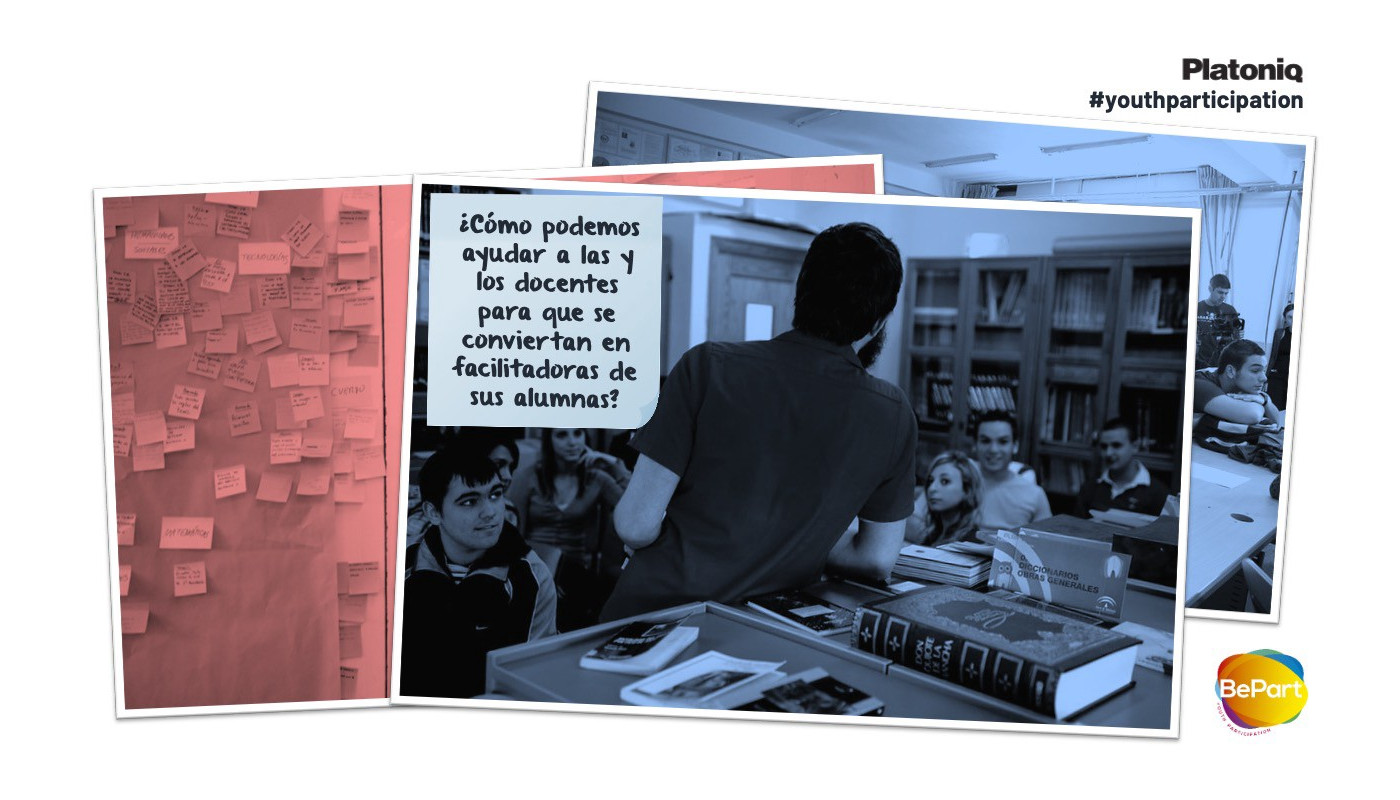
How can we help teachers become facilitators for their students?
cc-by-sa Platoniq
How can we help teachers become facilitators for their students?
Teachers know that participation is a value that needs to be encouraged. But sometimes it's scary, because when you turn on the microphone you have to be willing to listen to everything, what you like and what you don't. And this fear sometimes holds us back.
As a teacher reflected in the previous point, there is a lack of participatory culture in society and this not only affects students, but all actors in the school context. Turning on this “microphone” is scary and holds us back, why touch things if they’re working?
“The teacher is difficult. It’s classic to think that we have the absolute truth, but it is often a fear of not touching much of what is already working for me (…) It is normal for people to be afraid, but if it is an accompanied fear, that is, if they accompany you through this process of change, it’s always much easier.”
One of the goals of BePart is precisely to train and accompany teachers in the transition from the role of teacher to the role of facilitator. At Platoniq we are in charge of leading this training in participation and co-creation. Therefore, we interviewed and reflected with experts, whose contributions have helped us to establish the challenges of the training. Fear and power, oppression and privileges are some of the sharp issues that we consider necessary to address in order to rebalance weights and achieve, in the medium and long term, real student participation.
Teachers are by default immobilistic, because they defend their status. Therefore, any participatory issue will clash with teachers if they want to violate any of their privileges. If not, it can work with complete freedom.
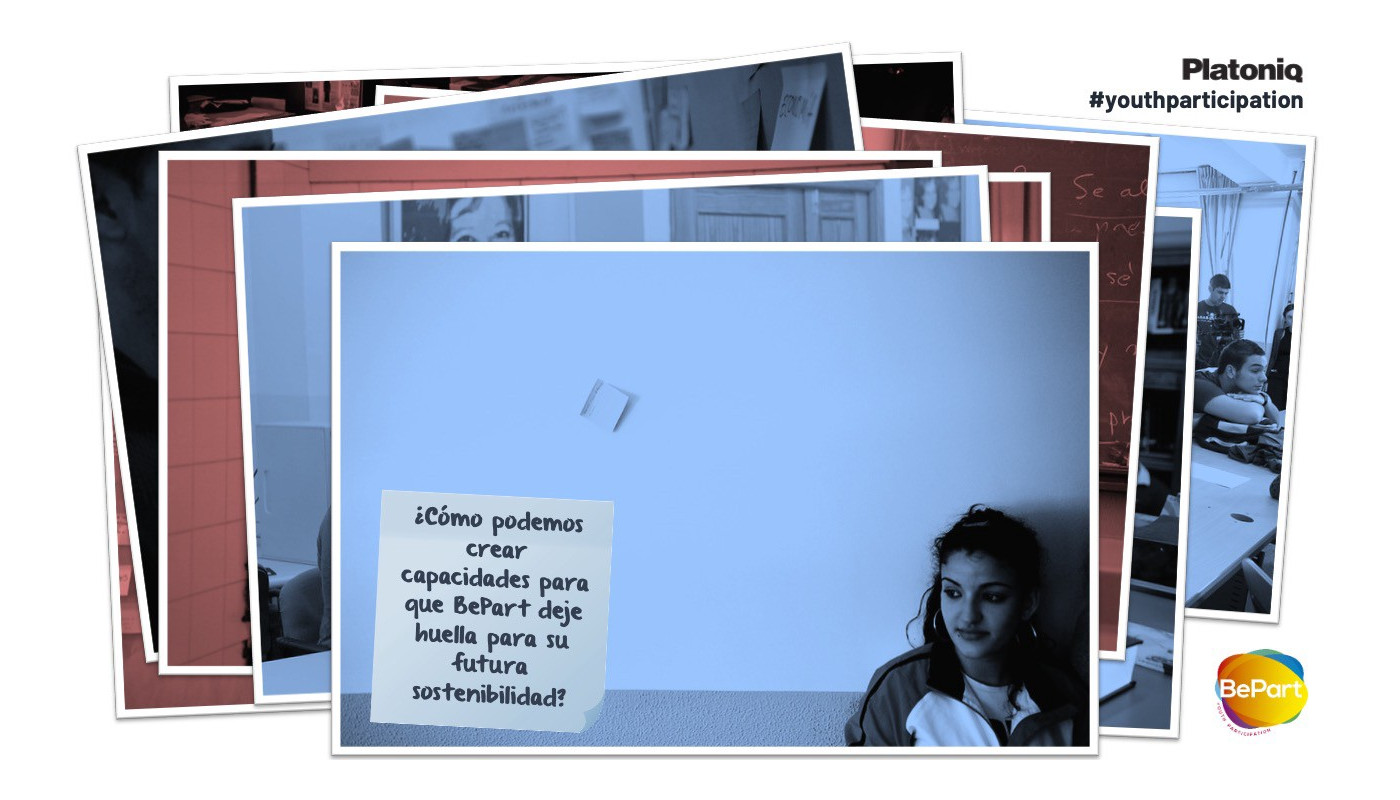
How can we build capacity for BePart to make its mark for its future sustainability?
cc-by-sa Platoniq
How can we build capacity for BePart to make its mark for its future sustainability?
There has to be a change of mindset, which is the big challenge of education, that we really have confidence that young people will end up leading change processes within the school itself.
BePart takes place in four schools in four different European countries. It is a pilot project that aims to promote student participation through the implementation of models of youth participation (MYP). Surely, in order to foster this leadership, it will be necessary to strengthen transversal skills and competences, such as, for example, entrepreneurial competence:
“Entrepreneurship has three basic legs. One is detection, alertness. Being able to detect what’s around me - what’s going on, what’s not working, because I’m sure students see things, but since they don’t have a chance to say it, I think they don’t even notice. (…) The second leg is: with the resources I have, what can I do ?; and the third is to take action. In the field of participation, entrepreneurial competence would play a very important role.”
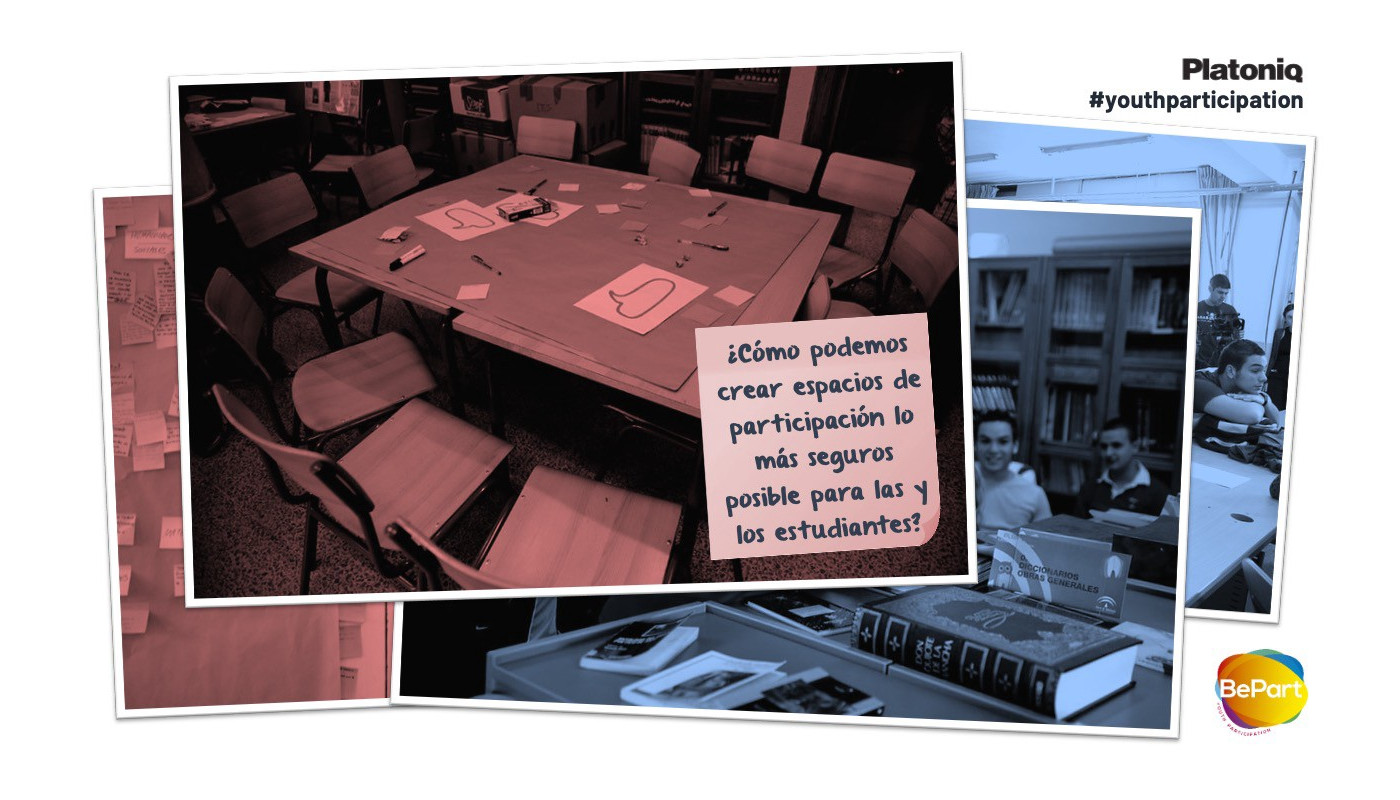
How can we create spaces for participation that are as safe as possible for students?
cc-by-sa Platoniq
How can we create spaces for participation that are as safe as possible for students?
“In order for students to be able to learn, participate or contribute as much as possible, they need to be comfortable. And by being comfortable, I don’t mean that they can throw a party in the classroom, but that they can be comfortable and calm so that they can be themselves.”
To participate, it is important to create spaces where students feel free and comfortable to be and express themselves. Therefore, it is important that students feel and take ownership of these spaces.
We cannot claim empowerment without spaces of empowerment.
“To avoid this [students being passive subjects of their lives], the school gives them spaces, possibilities to have a say in some of the decisions, but they are still very controlled and led from the school’s structure. We still have a long way to go to generate real participation and governance without the constant supervision of the educator. We cannot claim empowerment without spaces of empowerment. (2/2)”
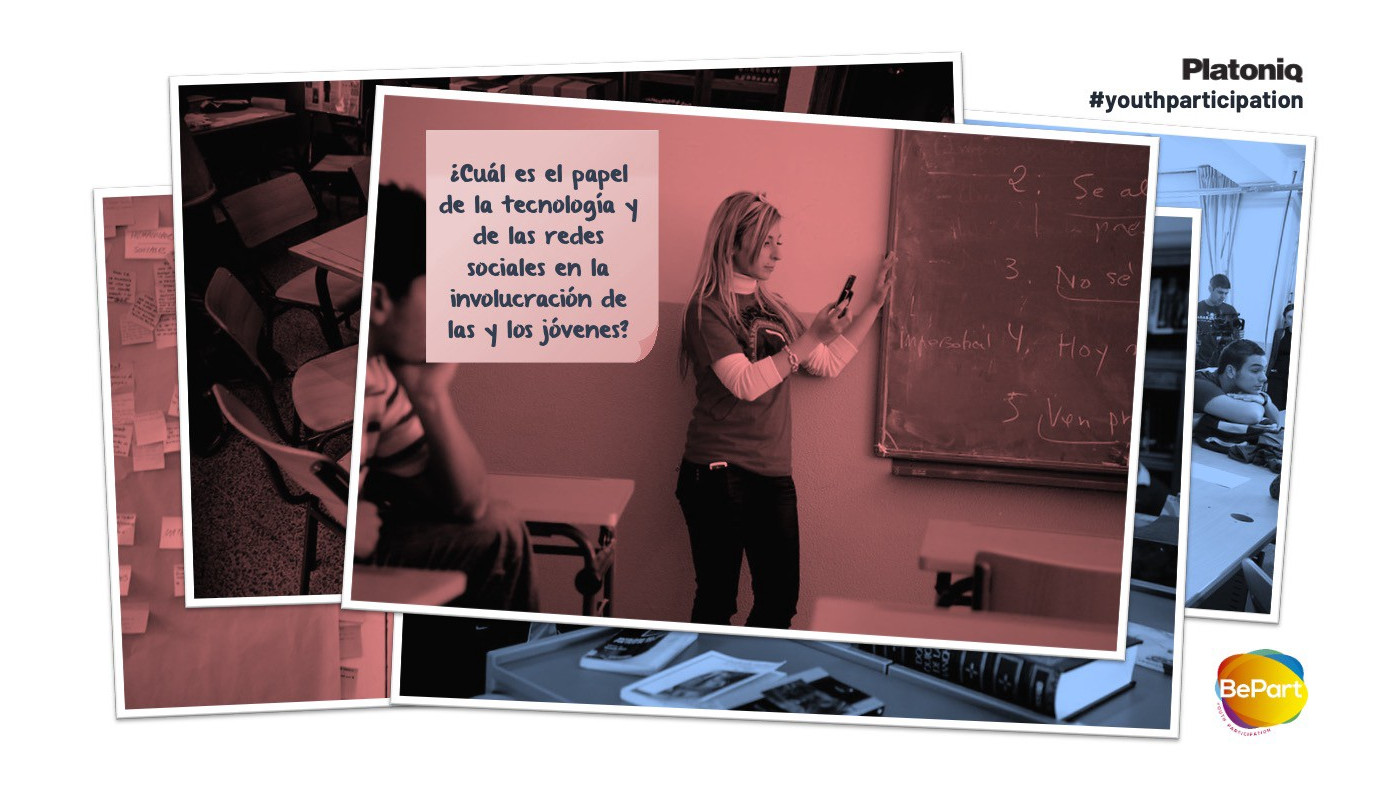
What is the role of technology, social media and innovative communication strategies in involving young people?
cc-by-sa Platoniq
What is the role of technology, social media and innovative communication strategies in involving young people?
One of the interviews we conducted was with the director of an institute where a participatory budget was carried out with the whole educational community through the digital participation platform Decidim, and where the students played a leading role [2]. After the experience, the interviewee was clear about the role that new technologies should play in these processes:
“Digital platforms are essential for student participation, because otherwise it gets very complicated. Although it is necessary to chase the students so that they take out their mobile phones, connect, click on the links, choose…”
- How to recognize the validity and dignity of the experiences and knowledge of students?
- Does the decision of a student have the same strength or power as the decision of a teacher?
Finally, we share the dilemma that a teacher conveyed to us and whose answer is probably a very accurate thermometer to measure how arid or fertile the school grounds are to accommodate real student participation:
“A year ago we considered reformulating the School’s Regulations for the Organisation and Operation and we wanted to have the opinion of the students. Here comes the big dilemma: does the decision of a student have the same strength or power as the decision of a teacher?”
To be continued!
Until the thermometer of empowerment and youth leadership comes to a boil, from Platoniq we continue to work to achieve models and school policies that include real student participation.
At the moment, through the BePart project, we are developing a co-creation manual and a virtual training for teachers. Both resources will guide and train teachers in facilitating the participation processes that are generated in their schools, led by students and accompanied by the entire school community.
We’ll tell you more about it soon, so stay tuned ;)
References
- Freire, P. Letters to those who intend to teach (Professora sim, tia não: cartas a quem ousa ensinar). (1993). Fragment of the seventh letter.
- Experiences in schools that use Decidim for participatory budgeting: https://atelierdevosidees.loiret.fr/processes/budgetcollegiens
Photographs by Antonio Miñán and Blanca García during the workshop of the Banco Común de Conocimientos. https://platoniq.net/es/bcc/


